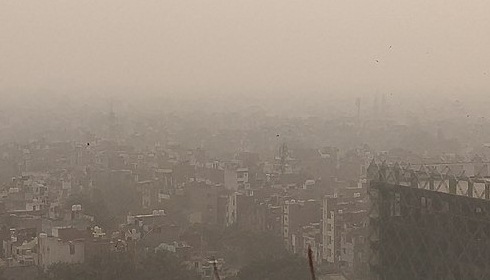
Antibiotic resistance could rise 17% by 2050, causing 840,000 premature deaths globally unless policies are changed: Researchers
If there were no changes to current policies on air pollution, by 2050, levels of antibiotic resistance worldwide could increase by 17%, leading to around 840,000 premature deaths across the globe, especially in sub-Saharan Africa, indicating that lowering harmful air pollution levels could aid in reducing antibiotic resistance, researchers from Zhejiang University, China, who undertook the first comprehensive worldwide study of potential connections between the two, published recently in the Lancet Planetary Health journal, said.
The study's conclusions illustrate how reducing air pollution could significantly lower the number of fatalities and monetary expenses associated with diseases that are resistant to antibiotics.
According to the data, greater air pollution may be associated with a higher risk of antibiotic resistance in various parts of the world.
According to the researchers, their data shows that the two have become closer over time, with recent years seeing bigger increases in antibiotic resistance coinciding with rising air pollution levels globally.
Despite the fact that air is widely acknowledged as a direct pathway and important vector for the spread of antibiotic resistance, there is scant quantitative information on the many methods by which antibiotic-resistant genes are spread by air pollution.
Hospitals, farms, and sewage-treatment facilities are a few examples of possible paths that release and disseminate antibiotic-resistant particles into the air and over long distances, the researchers noted in their paper.
Lead author Professor Hong Chen, of Zhejiang University, China, said, "Antibiotic resistance and air pollution are each in their own right among the greatest threats to global health."
"Until now, we did not have a clear picture of the possible links between the two, but this work suggests the benefits of controlling air pollution could be two-fold: not only will it reduce the harmful effects of poor air quality, it could also play a major role in combating the rise and spread of antibiotic-resistant bacteria," he added.
Antibiotic misuse and overuse are the primary causes of antibiotic resistance; however, research indicates that air pollution also plays a role in the proliferation of bacteria that are resistant to antibiotics and have resistance genes.
However, until today, there was little information on the worldwide impact of PM2.5 air pollution, which is composed of particles 30 times thinner than human hair.
Sources of PM2.5 include industrial processes, road transport, and domestic coal and wood burning. Recent findings indicate 7.3 billion people globally are directly exposed to unsafe average annual PM2.5 levels, with 80 percent living in low- and middle-income countries.
The study examines the impact of PM2.5 on antibiotic resistance globally, using data from 116 countries from 2000 to 2018. The dataset includes over 11.5 million test isolates from nine bacterial diseases and 43 different antibiotics. Factors like antibiotic consumption, sanitation services, economics, health spending, population, education, climate, and air pollution were used to analyze the effects of these factors.
The researchers found that antibiotic resistance increases with PM2.5, with every 1% increase in air pollution associated with 0.5–1.9% increases in antibiotic resistance, depending on the pathogen. The link has grown stronger over time, with higher concentrations observed in North Africa, the Middle East, and South Asia. Because of their vast populations, China and India are thought to have the biggest impact on the premature death toll from antibiotic resistance.
The analysis further indicated that antibiotic resistance resulting from air pollution is linked to an estimated 480,000 premature deaths in 2018, leading to additional economic costs of $395 billion.
According to the study, PM2.5 is one of the primary causes of antibiotic resistance, accounting for 11% of changes in global average resistance levels. In comparison, health spending accounts for 10% of changes, while drinking water services account for 3%. North Africa and Western Asia have the biggest impact on antibiotic resistance, accounting for 19% of increases in resistance levels.
The authors said that their modeling of possible future scenarios indicates that if there were no changes to current policies on air pollution, by 2050, levels of antibiotic resistance worldwide could increase by 17%, leading to around 840,000 premature deaths across the globe, especially in sub-Saharan Africa.
Implementing a policy limiting PM2.5 to 5 g/cubic meters could reduce antibiotic resistance by 17% by 2050, reduce premature deaths by 23%, and save $640 billion annually, they further noted.